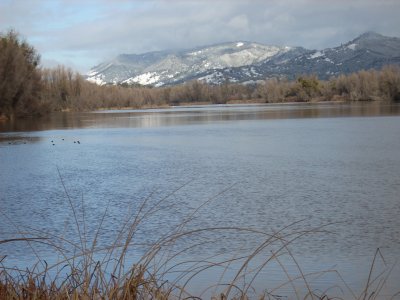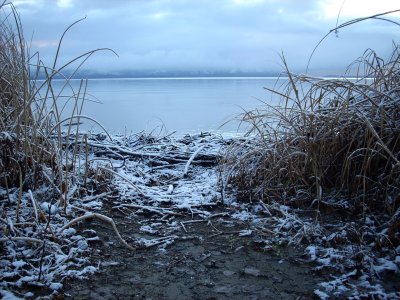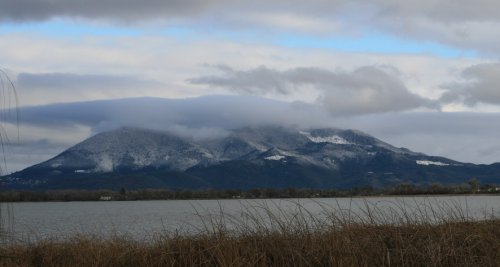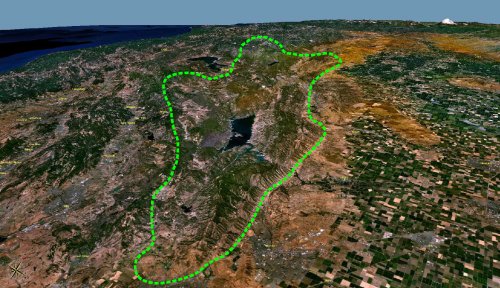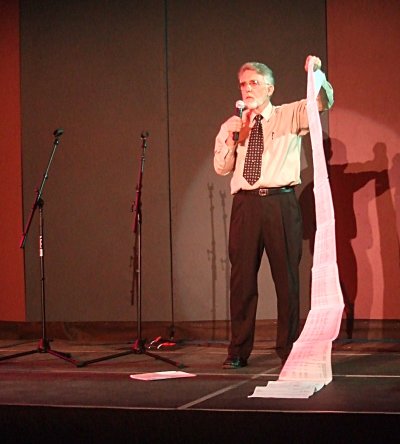CLEARLAKE OAKS – Last week the U.S. Environmental Protection Agency began a new phase of cleanup activities near the Sulphur Bank Mercury Mine Superfund Site.
EPA Region 9's Emergency Response Division – which recently completed a cleanup at Abbott Mine in 2007 and at Elem Colony in December 2006 – is handling the cleanup.
Chuck Lamb, chairman of the Clear Lake Environmental Action Network (CLEAN), said that the cleanup is not an emergency; the emergency response division is so named because it can mobilize quickly and perform the work with less red tape.
This latest cleanup will be about 10 percent of the size of the Elem Colony cleanup, which removed contaminated mine wastes from residential yards and roadways, said Rick Sugarek, the EPA's project manager on the Sulphur Bank project.
EPA reported that it plans to remove contaminated mine waste from areas along Sulphur Bank Mine Road and Ward Road and several residential properties located to the south and west of the Sulphur Bank Mercury Mine Superfund Site near Clearlake Oaks.
The Sulphur Bank Mercury Mine began operations in the mid-1800s. The miners dug for sulfur and mercury, ingredients used for gold mining and gunpowder, according to a report on the mine by University of California, Davis researchers.
The mine closed in 1957, leaving approximately 3.5 million cubic yards of production waste scattered in four major waste piles on the 220-acre mine property, according to the EPA.
Miners also left behind a 90-foot deep, flooded open pit mine known as Herman Impoundment. Contaminated water flows from Herman Impoundment through waste rock into Clear Lake contaminating the sediments and the Clear Lake ecosystem.
The EPA added the mine to the National Priorities List in 1990, and has conducted extensive field investigations to determine the nature and extent of contamination at the site.
The agency has conducted a number of cleanup actions at the mine property to prevent erosion of mine wastes into Clear Lake, to control discharges of contaminated surface water from the mine, and to seal several improperly abandoned geothermal wells on the property.
Keith Takata, the EPA's Superfund director for the Pacific Southwest region, said abandoned mines like Sulphur Bank too often leave behind “a toxic legacy that continues to threaten the health of the people and natural resources of the area.”
Sugarek said the cleanup will take about six weeks.
The area slated for cleanup was once home to miners who worked in the mine, said Sugarek. “It's basically a private residential area now.”
In the 1940s and 1950s roads in the area were built up with contaminated mine waste, said Sugarek. More recently, mine waste was used in some of the residential driveways and to repair potholes.
“We found mine waste in very specific locations,” he said.
Lamb said the EPA began conducting testing and taking samples in the area – along roads and the shoreline, and on private properties – at the request of area residents.
Final analysis of soil samples around homes and in roadways showed elevated mercury and arsenic levels at 13 locations, the EPA reported.
Lamb said that the EPA informed residents of the findings and planned to deal with 12 of the sites immediately. One site, said Lamb, is more complex and will require additional analysis before action is taken.
Without the removal action, the EPA is concerned that residents may be exposed to harmful levels of mercury and arsenic that are present in mine waste that was used as construction material in the residential area.
People can be exposed to mercury and arsenic by breathing air with contaminated dust or mercury vapor, incidental ingestion of contaminated soil or ingestion of contaminated water and food, the agency reported.
The EPA reported that it will spend approximately $800,000 to remove the contaminated material to prevent hazardous substances from coming into direct contact with area residents and from reaching Clear Lake.
Crews will work through March to excavate approximately 2,500 cubic yards of contaminated soil and transport it to the disposal site at the Sulphur Bank Mercury Mine. Clean soil will then be used to replace the contaminated soils that EPA excavates.
Sugarek said the contaminated soil is fairly shallow – between 6 and 12 inches deep. “We ought to be able to get in there and get it down straightaway,” said Sugarek.
Because of concerns for cultural resources, Sugarek said an archaeologist from the firm Pacific Legacy surveyed the area within the last few weeks.
One of the homes in the area is more than 50 years old, and therefore is a potential historic resource, along with a nearby rock wall, said Sugarek.
The archaeologist found some other historic materials which Sugarek said aren't in the work area, although they're not sure if those items are actually intact or have been previously disturbed. So a second archaeologist is taking a look at them.
At Elem, EPA relocated tribal members for several months while the extensive cleanup was underway. The agency excavated contaminated soil that the Bureau of Indian Affairs had used to build roads on the property in the early 1970s. They also replaced some housing and laid new water pipes.
However, no one will need to be relocated in this instance, Sugarek said.
Instead, EPA will use air monitoring and control dust by wetting down the area during work, said Sugarek. They'll coordinate with property owners to give them access to the property.
“If I can speak for our community, we are once again impressed with the EPA's concern for our well being and we continue to appreciate the responsible and professional manner in which these cleanups have been conducted,” said Lamb.
Elem Colony cleanup still raising issues
However, there is still controversy in some quarters about the Elem Colony cleanup.
“The issue is ongoing,” said Sugarek.
Some tribal members and archaeologist John Parker have accused the EPA of failing to follow National Historic Preservation Act guidelines during the six-month Elem cleanup.
Parker has accused the agency of failing to protect the area's cultural resources and excavating in a manner that damaged the archaeological record.
The result, Parker alleges, is the loss of 8,000 years of cultural history, which he currently estimates is work $70 million. Previously, he had put the damage at $40 million.
Ray Brown Sr., tribal chair of the Elem Colony, says he's “80-percent happy” with the cleanup.
“Overall what they did there was a lot better than what was there,” said Brown.
However, Brown said the tribe's general membership voted in favor of suing the EPA over the cleanup.
“They don't know what they're getting into,” said Brown. “It's really not practical for us to even get it started.”
He said he didn't think attempting a lawsuit against the government was worth it. “I'm against it.”
For its part, EPA has responded that it complied with the National Historic Preservation Act guidelines as far as was required by the Comprehensive Environmental Response, Compensation and Liability Act (CERCLA), the 1980 legislation that created the Superfund program.
On Dec. 11 the Advisory Council on Historic Preservation sent Takata a letter suggesting that EPA could have done a better following the National Historic Preservation Act.
Sugarek said his interpretation of the letter is that it asks, “How do we make sure that we protect cultural resources in future projects if the procedures that they set up are cumbersome. How do we do it?”
He said EPA still owes the council a response. “We need to have some internal discussions first.”
National Historic Preservation Act sometimes don't work in the context of cleanup emergencies, said Sugarek.
E-mail Elizabeth Larson at This email address is being protected from spambots. You need JavaScript enabled to view it..
{mos_sb_discuss:2}


